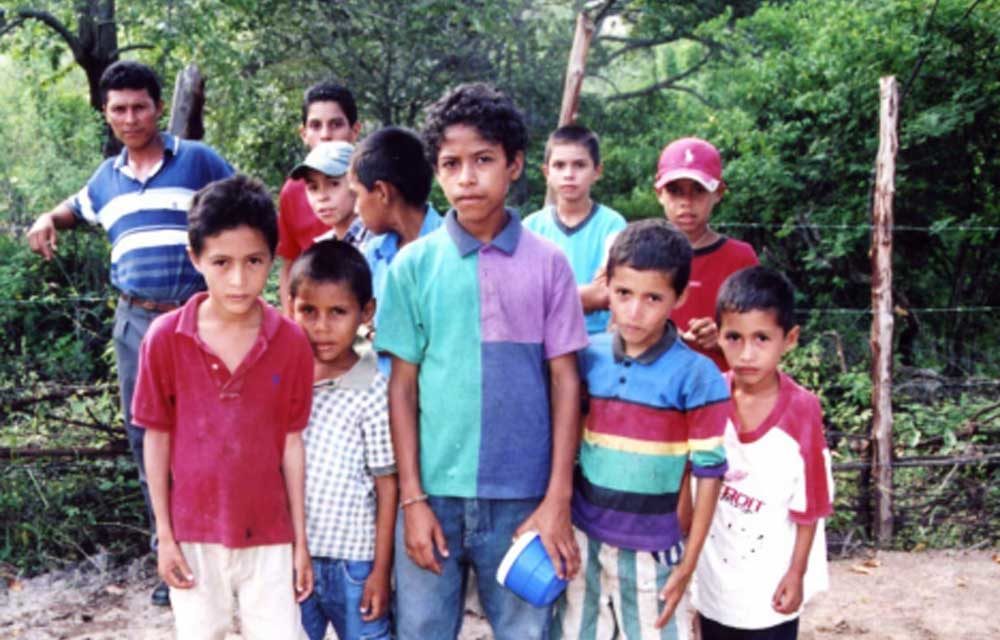It has often been said that U.S. immigration policy is broken. It seems so, but we are nearing fifty years of trying to fix policies that determine who is admitted into the U.S. and who stays. Every few years these policies are altered. Since the horrific events of 9-11 in 2001, deciding who and how many individuals can stay in the United States permanently has become more contentious and controversial. It is certainly one of the more difficult questions facing the new Biden administration.
In the last decade more immigrants arrived from Mexico and Central America than from any other region of the world. While the arrival of immigrants on our southern borders has been the subject of many media reports, the migration story has been only superficially covered and much misinformation exists. This essay may shed some light on current immigration from Central America.
Migration is governed by push and pull forces. My visits to the Central American countries of Guatemala, Belize and Honduras convinced me that in those countries the push factors related to poverty, drug trade, political repression, violence, government corruption, severe weather events, prolonged droughts, and sexual assaults were more important than the pull forces of good jobs and the American dream.
Some years ago I had the opportunity to travel to Honduras with a team of engineers with expertise in drilling water wells. We visited the Paraiso District which had recorded an infant mortality rate that was among the highest in the world. Health problems persisted because the community drank whatever water was available, and sometimes that water was contaminated. There were no jobs in their isolated communities, and thus residents could not afford to buy fresh water from the trucks that
came to their neighborhood once a week.
The Paraiso District of Hondurans is in the southernmost region of the nation where hundreds of small communities dot the mountainous region. Most of these communities are isolated and poverty stricken. Only a few have access to fresh water, and none have electricity or gas lines.
The drive up the dirt road leading to these small mountainous communities is hazardous and impossible to reach without four-wheel vehicles. The community that I visited had no automobiles, radios, or televisions and the residents were almost completely cut off from the rest of the world.
Families in this area lived on what they could grow and harvest, a pattern known as subsistence farming. With climate change, these agricultural areas are experiencing longer dry seasons which hamper crop
production. There have also been five devastating hurricanes in the past year.
Ten years ago these villagers were not leaving their homes, even in difficult times. But in the last ten years much has changed with the region’s climate. A recent drought has continued for more than five years, devastating most farming communities. In rural Honduras there is not enough to eat, and malnutrition has become a serious health concern.
The villagers cooked their meals with wood gathered in the forest at the bottom of the mountain. Wherever we drove in the countryside we saw men and boys walking up and down the mountains with wood bundles on their backs. Wood made it possible to cook lunch and dinner. Today, there is less wood and also fewer crops to harvest for food.
Although I was surprised by the prevalence of poverty, rural poverty is especially hard on Honduran families. A recent NBC news team found that almost two-thirds of the Honduran population lived in poverty, making this Central American nation one of the poorest in the Western Hemisphere. The Honduran government offers little or no assistance to these isolated rural communities.
The $1.1 billion dollars of U.S. foreign aid allocated to Honduras in 2017 was directed principally to the development of manufacturing and infrastructure construction and failed to address coping with the prolonged droughts brought about by climate change. Poverty persists in Honduras despite the aid because government corruption has not been rooted out. People are pushed out of their homes by hunger and by an overall absence of security and political reform.
Most U.S. migration experts agree on two major proposals: expansion of foreign aid, but not to the national governments which in the past have been wasteful or corrupt. In a thoughtful article, Jen Kirby, a reporter for Vox, suggested that the best way for the U.S. to assist countries like Honduras “is to support the civil society organizations and local groups on the ground that are already working to improve their societies.”
While assistance from wealthy nations is essential, the United States should carefully consider where that aid goes and take the lead now. One of the root causes of migration from Central America is poverty. A solution to Hondurian poverty is continued United States foreign aid. But the U.S. should direct the funding to NGOs, non government entities such as university small business centers, Catholic Charities, and other established non-profits that directly invest in people.
In addition to funding, the U.S. should establish asylum offices in countries like Costa Rica where refugee seekers from Honduras, Guatemala, and El Salvador can
begin the asylum application and thus avoid the dangerous travel to the U.S. border through Mexico.
Writing about “How the U.S. Created the Central American Immigration Crisis,” investigative journalist
Rebecca Gordon concluded that “even if there were no corrupt regimes, no government repression, and no drug wars, people would still be fleeing Central America because climate change has made their way of life impossible.” Americans can and should do something to reduce dependence on fossil fuels that has helped accelerate climate change and the warming of the earth. The subsistence crops Central Americans depend on are ruined by droughts that are the consequences of America’s excessive energy consumption habits.
The U.S. can and should reduce the causes of climate change. Additionally, a reassessment of how U.S. foreign aid to Central America is delivered and implemented should begin immediately.
Latinos Await Meaningful Immigration









